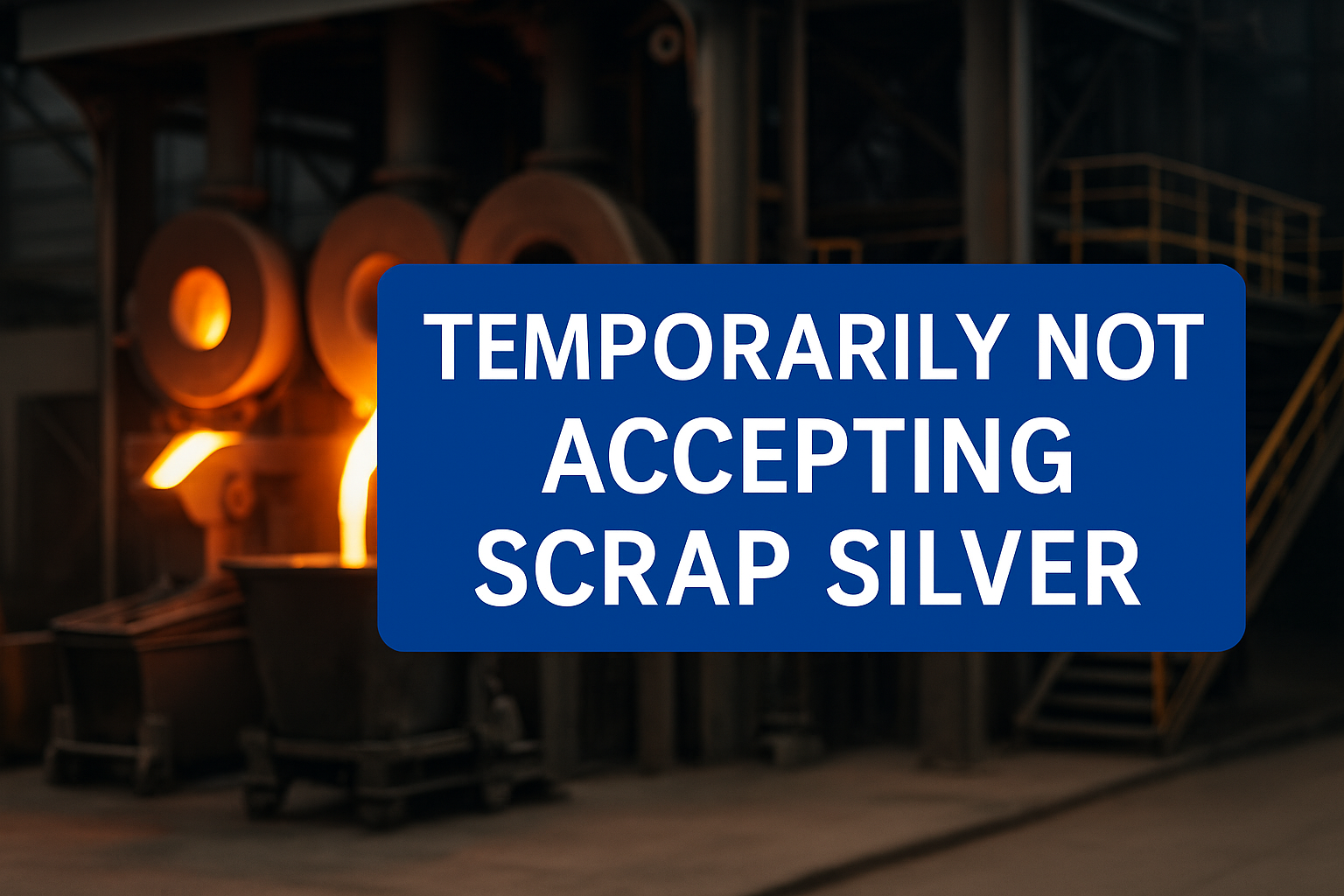
The Shift in Refining: Why Metal Refiners Are Pausing Purchases of Sterling, “Scrap,” and Coin Silver
Lately, many precious metals refiners in the U.S. have halted purchases of sterling silver (925), generic scrap silver, and coin silver. This change has ripple effects across the bullion and numismatic markets. In this post, we’ll explore:
-
What’s behind the shift
-
What it means for sellers
-
Strategies to navigate the new landscape
What’s Causing the Pause?
-
Profit Margins Under Pressure
Many refiners operate on tight margins. As the cost of refining (labor, energy, chemicals, regulatory compliance) rises, lower-purity material becomes less profitable to process. Refiners are focusing on higher-grade feedstock—i.e. bullion, .999 silver, and large lots. -
Inventory & Backlog Clearing
Some refiners already have stockpiles of low-grade silver materials. They’re triaging lower-margin input until existing work is digested, preferring to absorb fewer smaller, low-purity lots. -
Regulatory and Compliance Burdens
Handling scrap or coin silver often involves extra assay, anti-counterfeit checks, and compliance steps. When regulatory burdens increase (KYC, audits, environmental), refiners may opt to limit low-value, high-effort materials. -
Logistics and Cost Efficiency
Shipping and handling small quantities of scrap or mixed silver items is less efficient. The cost per ounce to process such items may now exceed the returns, prompting refiners to pause.
What It Means for You, the Seller
-
Reduced options for small silver sellers
If you have sterling flatware, silver jewelry, or coin silver pieces, you may find fewer buyers and longer waiting times. -
Possible lower offers
With fewer participating refiners, the remaining buyers may lower purchase offers to cover increased risk or costs. -
Increased due diligence
Sellers must carefully vet any refiner still taking such materials to ensure fair assay practices and transparent pricing. -
Opportunity for consolidation
Sellers with small lots may find it more economical to aggregate or wait until they have higher-purity or larger quantity lots to market.
How to Navigate the Change
-
Convert to Higher-Purity Pieces Where Possible
If you have jewelry that can be melted or refined into .999 silver or gold, that may make it more attractive to refiners. -
Use Trusted Refiner Relationships
If you’ve worked with a refiner before, maintain relationships. They may make exceptions or provide custom deals for known, reliable clients. -
Bundle & Aggregate
Accumulate smaller lots until you reach a threshold that justifies the refiner’s processing cost. -
Explore Specialty Refineries or Collectors
Some boutique refineries or numismatic buyers may still purchase sterling or coin silver for resale or remelt—but expect smaller margins and higher scrutiny. -
Stay Updated & Flexible
Market conditions and refiner policies can shift quickly. Maintain multiple buyer contacts and be ready to adapt.
Final Thoughts
The temporary halt by refiners on purchasing sterling, scrap, or coin silver highlights the fine margins in the metals-refining business. For sellers, it means adapting strategies, consolidating inventory, and being more selective about buyers. For the industry, it’s a recalibration that may only last until refining economics become more favorable again.
